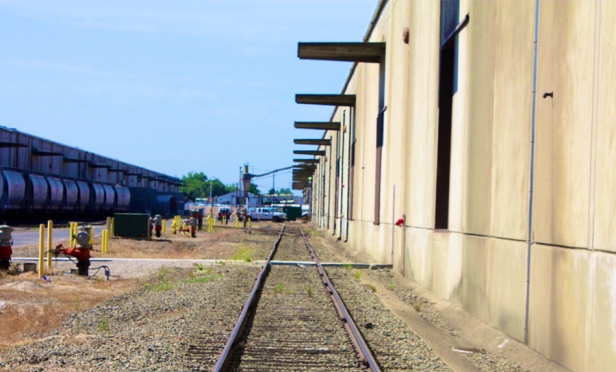 Sacramento continues to drive the majority of agricultural trade, some via rail (credit: McClellan Park).
Sacramento continues to drive the majority of agricultural trade, some via rail (credit: McClellan Park).
OAKLAND, CA—Rising e-commerce activity has created new demand for just-in-time facilities near urban core markets, the Port of Oakland and Oakland airport, along with Central Valley fulfillment centers. The Central Valley/Sacramento area continues to drive the majority of agricultural trade (fruits, nuts and rice, for instance) for California and the nation, as well as a portion globally. However, these facilities were previously located near the ports and airport (Oakland/East Bay) and are now moving farther out due to rising costs of housing for the blue collar workforce.
In the third quarter of 2018, the US industrial market benefited from record-high port volumes, positive absorption and a vacancy rate that remained below 5% despite the addition of new inventory. The continued enthusiasm for industrial product is examined in Transwestern's third-quarter industrial outlook, which revealed rent growth across nearly every market tracked.
Oakland/East Bay and Sacramento, along with Long Island in New York, all posted year-over-year rent growth more than twice the national average of 7.3%. And the Inland Empire, Atlanta and Chicago led the nation in absorption during the most recent quarter, with the Inland Empire topping 25 million square feet of absorption for the previous 12 months. Preleased deliveries accounted for a significant percentage of this volume.
“The type of demand for industrial space in the East Bay during the past couple of years has transitioned from traditional warehouse and manufacturing uses to just-in-time, logistics and adaptive reuse, which quite possibly has guarded the market against trade changes domestically and globally,” Dina Gouveia, Transwestern director of research and marketing for the Bay Area, tells GlobeSt.com. “Currently, the market is witnessing a record-low single-digit vacancy of 4.7%). In the past five years, the total amount of vacant space has decreased by more than 50% while inventory has only increased by 5%. This adverse effect indicates that demand continues to outpace the market, thus justifying the 2 million square feet of product currently under construction.”
With the average age of industrial product now at 44 years, many industrial and warehouse buildings on the market are outdated for current occupancy requirements, due to increasing product demand, the product being manufactured, its use and machine requirements–specifically pertaining to characteristics such as adequate clear height, power and sprinklers. Some of these newer tenant uses are positively impacting and rehabbing once obsolete standards, Gouveia tells GlobeSt.com.
For example, LDK Venture's Bay Area Logistics Center, a 707,600-square-foot distribution facility in Richmond, is now shell complete and ready for tenant improvements. San Leandro Business Center will add 137,091 square feet in building 2 and 293,940 square feet in building 3, with delivery expected in fourth quarter 2018. In Oakland, phase two of Prologis' Northeast Gateway project will add 231,660 square feet in the latter half of 2018 and 190,000 square feet with phase three in 2019. Goodrick Business Park in Richmond is currently under construction slated to bring an additional 171,630 square feet of warehouse space with delivery now expected in fourth quarter 2018.
In leasing activity, Peet's Coffee & Tea took down 128,168 square feet at 650 85th Ave. in Oakland, Rapid Displays leased 80,000 square feet at 33261-33297 Central Ave. in Union City and NBC Packaging took down 93,600 square feet at 701 Willow Pass Rd. in Pittsburg, GlobeSt.com learns.
“High-quality infill remains in high demand by investors, causing average rent to blow by the $6 per-square-foot threshold,” said Matthew Dolly, Transwestern research director in New Jersey. “While construction continues at an aggressive pace, it can't keep up with the red-hot demand. As a result, we've seen the US industrial vacancy rate drop 300 basis points in the past five years.”
Even in the face of rising protectionism, trade disputes and slightly softer retail sales, the report attributes industrial real estate's enduring popularity to robust gross domestic product growth, strong consumer spending and job growth in the construction, manufacturing, transportation and warehousing sectors.
“The expected growth in online holiday shopping bodes well for distribution and e-commerce, but we're also seeing manufacturers and assemblers signing leases, underscoring the overall strength of the sector,” said Sandy McDonald, Transwestern research director in Chicago. “If there is any reason to be cautious, it would be concerning the ability of some markets to attract and retain large-capacity tenants for new construction outside the inner core.”
© Touchpoint Markets, All Rights Reserved. Request academic re-use from www.copyright.com. All other uses, submit a request to [email protected]. For more inforrmation visit Asset & Logo Licensing.







